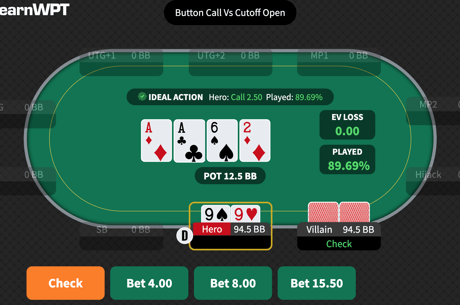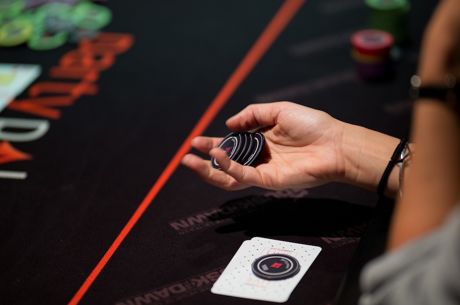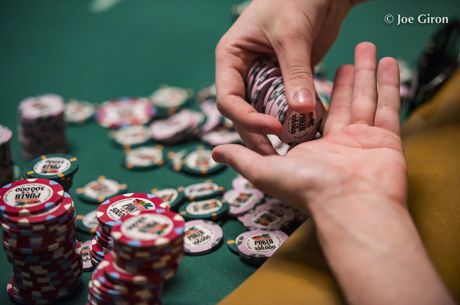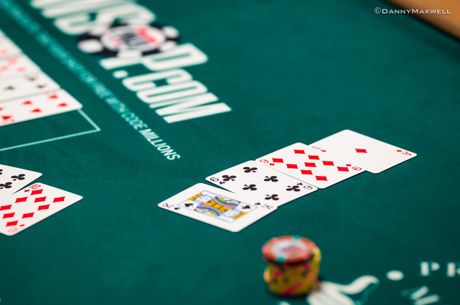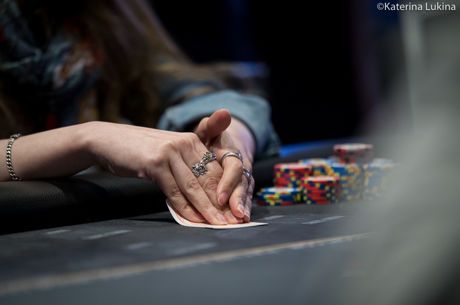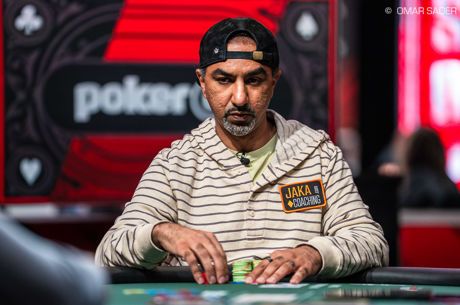Short Stack Strategy: 5 Tips to Survive as a Short Stack
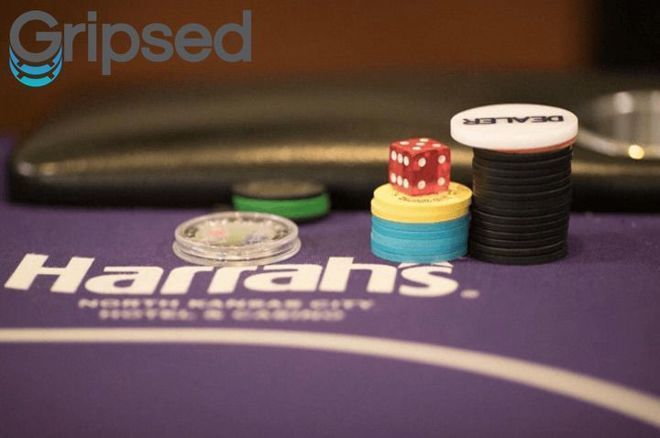
Become a winning poker player for free in just 30 days! We teach our students the simple concepts needed to become a consistent, profitable poker player. We will help you build your confidence off the table, so that you can win more money on the table! www.gripsed.com
Many poker players cut their teeth in live cash games. These games generally play at least 100 big blinds deep.
Players who only have experience in these games often find themselves confused when they play poker tournaments with considerably shorter stacks.
With under 20 BBs, such players can generally get by with one of the many push-fold charts available online, but these charts don't help much with stacks between 20-30 BBs.
This is the toughest stack size to play, yet the most important one to learn for tournaments since the average stack often falls into this range when the big money is on the line.
Here are a few tips I have come across over the years that can help you keep your stack afloat.
In this collection of short stack poker strategy tips we'll cover:
- How being short stack affect your range
- When continuation bets can help you win more
- How to play small pairs
- Why position is important
- What is a limping strategy and why it matters
In other words, you'll find here actionable tips that will help you put together a great and winning short stack strategy to win more hands and play better poker.
Let's begin.
Claim your free MTT starter bundle now!
1. Open More Big Cards, Fewer Small Cards
When stacks are short, you should play more big cards and start to drop smaller ones from your range.
A hand like 5-4-suited is good in situations where you can flop a flush or straight draw and expect to win many times your investment on the later streets when you hit.
But there just aren't enough chips left behind in the effective stacks for this when you are short.
When stacks are deep, a hand like K-J-offsuit suffers from terrible reverse implied odds.
This means you can't always play for stacks profitably when you make just one pair because most players are only willing to put in 100 BBs against you over three streets when they have that hand beat.
This is not the case when stacks are short.
You can confidently get in 25 BBs if you flop a pair with K-J-offsuit, but that's not so when you have 5-4-suited.
DID YOU KNOW? You can now sell your online action on this poker site.
2. Use Polarized C-Betting Ranges
When you open from early position and get called by the big blind, you have a massive range advantage.
You often have a profitable continuation bet with your entire range. This doesn't happen when the effective stack is short because there are many good, but marginal hands in your range that cannot stand a check raise all in.
This is not a major threat 100 BBs deep because you can comfortably call the raise without being pot committed, but not when you are only 25 BBs deep.
For this reason, your c-betting range should consist of hands like:
- top pair,
- top kicker,
- combo draws that don't mind calling a shove,
- bottom pair or gutters that don't mind folding to a shove.
Marginal hands like second pair or weaker draws should be checked back on the flop and often called on the turn in order to get to showdown and realize their poker equity.
You always have the option of betting the river as a bluff if you don't think that you can win at showdown or betting for value once you become less concerned about a check-raise.
Learn how to consistently beat MTTs for free! Claim your free MTT Strategy bundle and start winning poker tournaments today with Gripsed Poker Training.
3. Just Push with Small Pairs
If you have small pairs like 2-2 through 7-7 in late position, you very likely have the best hand, but you'd rather not raise and play it post-flop or call a three-bet shove from a hand like 9-8-suited with it.
Consider open shoving with them for 20-25 BBs stacks and three-bet shoving with them for 25-30 BB stacks.

These hands lose a considerable amount of value on the flop. When they are ahead, they rarely hold up on later streets and when they are behind, they do not make good bluffing candidates due to only having two outs.
Additionally, the smaller ones like 2-2 and 3-3 work well as pre-flop shoves because they often fold out a few hands that dominate them like 4-4 and 5-5, but retain good equity against many of the hands that call like A-K and A-Q.
ALWAYS GOOD: Poker Hands List
4. Exploit In-Position Calling Ranges
When you open from middle position with a 25 BB stack and get called by a player in position, you will usually be up against a Broadway hand.
This can allow you to choose bluffs and value bets more effectively.
For example, K-Q on a queen-high board is a monster in this situation because villain's range can contain a lot of Q-J and Q-T type hands, but A-Q often three-bets pre-flop in this situation.
Also, on a seven-high board you can often fire multiple barrels as a bluff since villain shouldn't have hands like K-7 or 8-8+ in his flatting range very often and pocket pairs below the seven will have a hard time calling future streets when overcards roll off.
5. Consider Using a Limping Strategy
One of the first poker tips we learn as we become better at poker is that open-limping is usually a bad idea.
While this is true, it can have its merits once stacks become short.
With 25 BB stacks, you may want to open-raise a hand like J-9-suited from the button, but fear a three-bet shove from aggressive players in the blinds.
Using a limping strategy can allow you to increase your chances of seeing the flop in a spot like this one.
Of course, you will have to have some strong hands in your limping hands as well. You may even want to use a limp-only strategy in the right scenario.
It isn't something you need to do against all opponent types, but it can be a powerful weapon to have in your tool belt if you know when to use it.
Conclusion
I often see otherwise decent players making critical mistakes with short stacks between 20 and 30 big blinds.
Many are good cash game players who simply have not had the experience necessary to play short stacks well.
Others are recreational players whose primary goal is to play a lot of hands and try to make something post-flop regardless of the mathematical constraints of the game.
If you fall into either of these groups, I hope these tips will help you avoid some of the most common problems you encounter deep in tournaments.
Join a community of like-minded poker players focused on helping each other and improving their poker game. Take our 30-day challenge and see if you can become a winning poker player too! www.gripsed.com/cash

